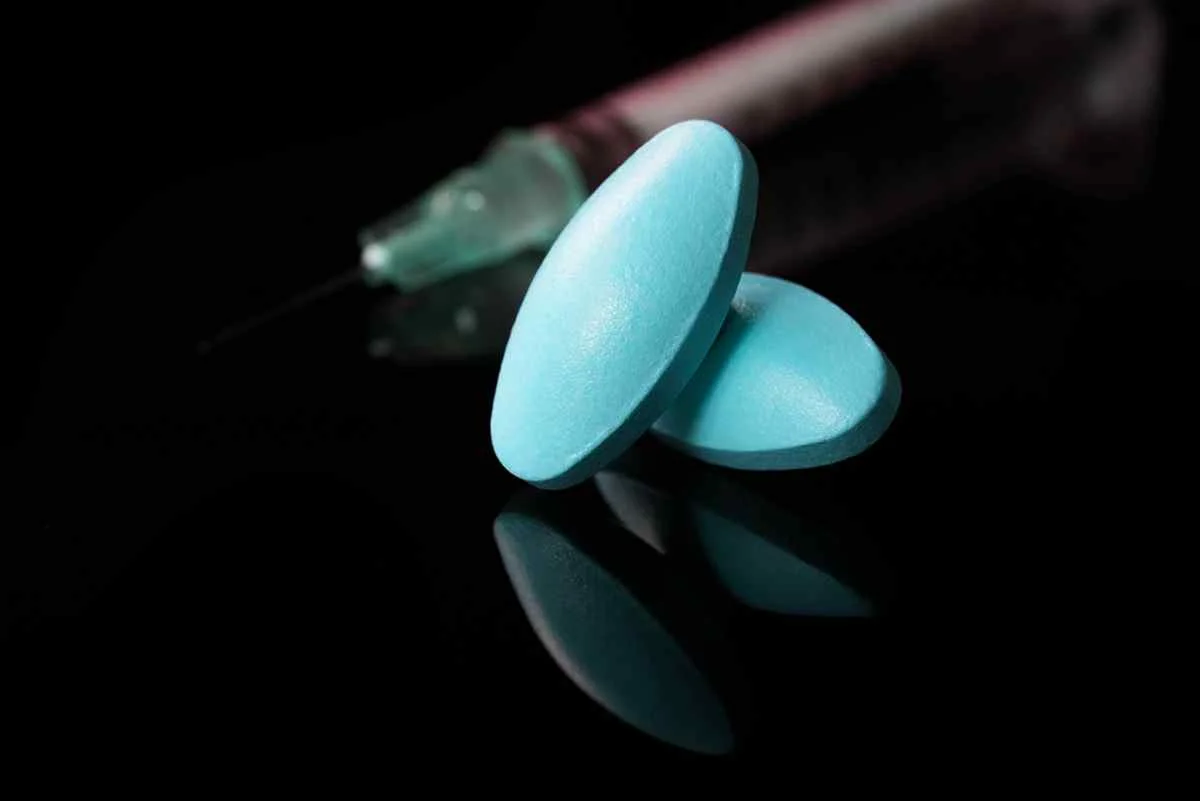Triazolam
Triazolam is a benzodiazepine medication indicated for the treatment of insomnia.

Common Brand Names: Halcion, Apo-Triazo, Hypam, and Trilam
Triazolam is a short-acting sedative-hypnotic belonging to a drug class called benzodiazepines. Benzodiazepines work by binding to benzodiazepine receptors, which are thought to be coupled with gamma-aminobutyric acid-A (GABA-A) receptors within the central nervous system (CNS). By activating these receptors, benzodiazepines like triazolam produce a variety of effects, including muscle relaxation and inducement of sleep.
As a Schedule IV controlled substance, triazolam is associated with a risk for dependence and addiction, albeit less so compared to other drugs in the federal drug scheduling system. Dependence and addiction to the drug will require professional medical intervention to safely detoxify and treat a patient.
Medical Uses for Triazolam
Triazolam is indicated for the short-term treatment of insomnia. For this purpose, triazolam must only be taken for 7 to 10 days. If the insomnia doesn’t improve within this time period, the patient may need a reevaluation for other medical or psychiatric disorders.
Dentists also use triazolam to induce sedation in their patients for a wide range of dental procedures.
Other uses of the drug include:
- As an adjuvant for medical procedures that require anesthesia
- As an anxiolytic
- As a sleep aid for passengers of short- and medium-range flights
Contraindications
Triazolam can cause impaired body balance and a compromised ability to stand up straight. Thus, it is not advisable to be given to the elderly as a treatment for insomnia. It is also contraindicated in patients with documented hypersensitivity or allergic reaction to it or any of its components, and to other benzodiazepines.
Moreover, triazolam is contraindicated in pregnant patients because of the risk of fetal damage, including an increased risk for congenital malformations when administered during the first trimester of pregnancy.
How Is Triazolam Abused or Misused?
Research conducted as early as the 1980s has already shown the potential of triazolam being abused. This is likely due to its short-acting positive effects, which can make patients want to use the drug more often.
Another early study from 1987 also revealed a case in which a patient started to self-administer triazolam in large doses (80 mg per day, which is 320 times higher than recommended). The patient also had a tendency toward mixed drug dependence, particularly nitrazepam. The study confirmed that physical and psychological dependence on triazolam can occur upon frequent administration of large amounts in individuals.
Nowadays, triazolam is usually abused through:
- Taking higher or more frequent doses than prescribed
- Doctor shopping or doctor hopping to get additional prescriptions
- Combining with other drugs and substances
Sublingual triazolam has also been found to act faster, as well as provide greater anxiolytic effects and lesser pain perception. As such, triazolam is often abused by crushing the tablets, dissolving them in water, and then taking the mixture sublingually. Some patients also tend to crush and then snort the tablets to achieve similar effects.
Drugs That Have Negative Interactions with Triazolam
It has been found that ketoconazole and itraconazole can greatly enhance the effects of triazolam. While initially favorable, this can be dangerous in the long run due to the risk of dependence.
Combining triazolam with nitrazepam and erythromycin also produce unwanted effects such as hallucinations. The following substances also have also been proven to have unfavorable effects when used with triazolam:
- Alcohol
- Atripla
- Cimetidine
- Diltiazem
- Fluconazole
- Isoniazid
- Itraconazole
- Nefazodone
- Rifampicin
- Ritonavir
- Troleandomycin
Grapefruit juice has also been found to have negative interactions with triazolam, along with other drugs like cyclosporin, midazolam, terfenadine, saquinavir, and verapamil.
Why is Triazolam Addictive?
Triazolam is a fast-acting drug, with a half-life of about 1.5 to 5.5 hours. This means that its pleasant effects hit quickly and potently but only last a short while.
In addition, triazolam dosages are on the lower end of the spectrum. It’s usually available in 0.125 and 0.25mg tablets, and is recommended to be used for no longer than 10 days. Thus, some patients who appreciate the effects of the drug are often tempted to prolong usage or increase dosing to continue to enjoy such effects.
Eventually, these habits can lead to dependence and even increased tolerance. In time, these can both result in triazolam addiction.
Triazolam Side Effects
As with other benzodiazepine medications, triazolam is associated with several adverse reactions that range from mild to life-threatening. Some of the most common adverse effects seen in triazolam are:
- Nausea and vomiting
- Dizziness
- Light-headedness
- Drowsiness or somnolence
- Amnesia
- Headache
- Impaired body coordination
- Nervousness
Less frequently, triazolam may produce the following:
- Constipation
- Diarrhea
- Dry mouth
- Rashes
- Sleeping problems/disturbances
- Increased heart rate (tachycardia)
- Tinnitus
- Confusion
- Impaired memory
- Euphoria
- Muscle cramps or pain
- Visual disturbances
- Depression
- Lethargy
- Sleep-driving and other complex behaviors
Sleep-driving is a complex behavior where an individual, who has just ingested a sedative-hypnotic like triazolam, drives while not being fully awake or with an amnesia for the event. This phenomenon may occur even at therapeutic doses of triazolam, but studies have shown that simultaneous use of triazolam and alcohol or other CNS depressants, or using triazolam in doses higher than prescribed, further increases its incidence. Because sleep-driving may be fatal, patients who report a sleep-driving episode must be advised to discontinue triazolam use.
Concomitant use of benzodiazepines, such as triazolam, with opioids can lead to life-threatening symptoms like:
- Oversedation
- Severe respiratory depression
- Coma
- Death
For this reason, co-administration of these drugs must only be reserved for patients who fail to respond to alternative treatment options.
Long-Term Effects of Triazolam
Chronic use of triazolam can lead to problems with sleep, dizziness, and confusion.10 Studies have also shown that prolonged use of triazolam can result in a high risk of amnesia, confusion, and hip fractures.
Symptoms of Triazolam Overdose
Triazolam overdose may occur at 2 mg total daily dose and may manifest as:
- Impaired body coordination
- Slurred speech
- Hypoventilation (respiratory depression)
- Drowsiness
- Confusion
- Seizures
- Coma
Triazolam overdose can also result in death, although it is more likely to occur if the drug is combined with other depressants such as alcohol, opioids, or tricyclic antidepressants.
Signs of Triazolam Addiction
The Diagnostic and Statistical Manual of Mental Disorders, Fifth Edition (DSM-5) categorizes 11 criteria representing major pathological behavioral patterns associated with triazolam use disorder:
- Taking triazolam in doses higher than prescribed or for longer than necessary
- Being unsuccessful in reducing or stopping triazolam use despite the desire to
- Taking a lot of time trying to get, use, or recover from use of triazolam
- Having cravings for triazolam
- Having problems managing personal or social obligations because of triazolam use
- Continuing to use triazolam even if it causes relationship problems
- Giving up on important activities because of triazolam use
- Continuing to use triazolam despite being put in danger
- Continuing to use triazolam despite exacerbation of existing physical or psychological conditions
- Increasing tolerance or requiring higher and higher doses of triazolam in order to achieve or maintain its desired effects
- Developing withdrawal symptoms due to triazolam use
Symptoms of Triazolam Withdrawal
Abrupt discontinuation of triazolam may produce mild to severe withdrawal symptoms like those associated with barbiturates and alcohol withdrawal. The severity of symptoms are believed to be dependent on the dose, although patients taking triazolam at therapeutic doses for as short as one to two weeks can also experience them. Symptoms associated with triazolam withdrawal include:
- Nausea and vomiting
- Tremors
- Convulsions
- Abdominal and muscle cramps
- Sweating
- Insomnia
- Visual and perceptual disturbances
Triazolam Detoxification
An individual who is experiencing withdrawal symptoms will benefit from detoxification or detox, a program that is designed to manage these unpleasant and potentially dangerous symptoms that have manifested after the patient has become dependent on the drug and suddenly stops using it.
The general approach to triazolam detox is gradual discontinuation of triazolam by tapering the doses being taken by the patient over a period of time. If you are to undergo detox, you may be given IV fluids, vitamins, and medicines to manage your symptoms, and you may also be switched to a benzodiazepine drug with a longer half-life to make tapering off much easier. You will receive round-the-clock care in a medical detox facility to ensure your comfort and safety.
Receiving Triazolam Addiction Treatment
There are various modalities for the rehabilitation and treatment of individuals with triazolam addiction, and all of these can help you in your journey to recovery. Basically, these interventions are given in two types of setups:
- Outpatient triazolam addiction treatment. This treatment setting is suitable for patients with milder addictions. In general, individuals are recommended to receive outpatient treatment if they are able to guarantee treatment compliance, which usually involves going to a treatment center to receive therapy and counseling on scheduled dates. Many of those who undergo outpatient treatment can continue with their usual routines, such as working, going to school, or attending to their responsibilities at home.
- Inpatient triazolam addiction treatment. For patients with severe symptoms or those with a history of poor treatment compliance, inpatient or residential treatment is recommended. This is so that they can receive more personal and constant supervision from qualified professionals to ensure their progress. At an inpatient or residential facility, you’ll receive a combination of different interventions, including individual therapy, group counseling, family therapy, and drug education classes. These interventions aim to provide patients with strong emotional support while they are undergoing rehab. Such programs also aim to help reduce relapse episodes by teaching the patients healthy ways to cope with their addiction and live a drug-free life.
Get the Help You Need
The first and most important step in achieving a substance-free life is seeking help. Fortunately, you don’t have to worry too much about the cost of rehabilitation and treatment if you have insurance. Both outpatient and inpatient treatment is covered by most plans. However, if you don’t have insurance, there is still a wide variety of financing options available to you.
Call our toll-free hotline (800) 429-7690. Our recovery support advisors can evaluate your insurance coverage and, more importantly, help you find the best treatment program for complete addiction recovery.
History of Triazolam
Triazolam was synthesized by the US pharmaceutical company Upjohn.16 A New Drug Application for triazolam was submitted to the US Food and Drug Administration (FDA) in May 1976, and the drug was subsequently introduced to the market under the trade name Halcion. Because of its short half-life and the absence of the hangover effect typically associated with other benzodiazepines, triazolam rapidly overtook other benzodiazepines on the market in terms of popularity. Triazolam was widely prescribed by physicians across the country, eventually becoming one of Upjohn’s most sold pharmaceuticals.
In 1993, the Committee on Proprietary Medicinal Products (CPMP) formed an ad hoc group whose objective was to assess Halcion, together with six other sedative-hypnotic medications. They concluded that Halcion carried a potential for dependence and recommended that the use of Halcion be limited to 10 days and not exceeding 0.25mg daily. The United Kingdom took an extra step to curb Halcion’s potential for abuse. In 1993, it revoked the license of Upjohn to market Halcion in the country.







